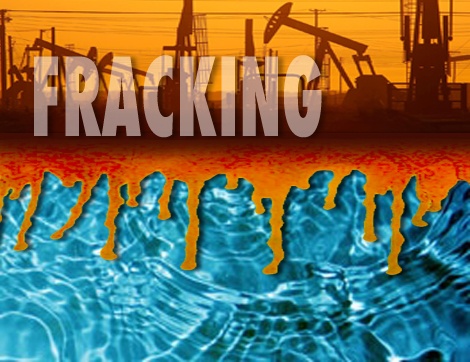
• Ogallala Aquifer could be poisoned by fracking wastewater well in Nebraska.
By Ronald L. Ray —
“Oil and water don’t mix.” That saying receives new meaning in light of a proposed disposal well for oil fracking wastewater, which Colorado-based startup oil and gas company Terex Energy Corporation plans for southern Sioux County in northwestern Nebraska. The project on the Lawcomer ranch, 14 miles north of Mitchell, Neb., took county residents by surprise, but opposition formed almost immediately, primarily because of a perceived threat to the land and—most importantly—the gigantic Ogallala Aquifer. AMERICAN FREE PRESS spoke extensively with a Terex executive and concerned citizens.
Sioux County is “God’s country.” The people traditionally take care of the land and the water. It is their life and their livelihood. The county is near the western end of the Ogallala Aquifer, which provides ultra-pure water to almost 1.9 million people, farms and ranches in eight states. Its natural water flow is from west to east.
Terex wants to use a 30-year-old dry oil well to inject up to 15,000 barrels of wastewater (630,000 gallons) per day, at 1,200-1,300 pounds per square inch pressure, into two 30% porous sandstone strata more than a mile below the aquifer.
Terex Vice President of Geology Martin R. Gottlob says the project is “eminently safe” and includes multiple protective measures, like berms and rubber containment liners.
“My kids have to live on this Earth,” Gottlob told AFP. “I want them to have a clean environment. . . .We are a green oil company. All knowledgeable geoscientists know [brine injection wells are] safe.”
Nebraska Oil and Gas Conservation Commission director William H. Sydow stated that the geological layer could extend hundreds of thousands of square miles and store billions of barrels of the brine, 7 to 17 times saltier than ocean water, which he incorrectly claimed was not hazardous. Double concrete-encased steel pipe will transfer the brine through the aquifer level and a mile of “impermeable” shale to the storage layers.
But is the disposal process really as safe as alleged? Many people, including scientists, health professionals and this newspaper, are not so sure. And Sioux County officials and residents have serious concerns about hazardous environmental impacts, the problem of 80 heavy trucks per day on an unsuitable, barely-two-lane road and safety of schoolchildren along the truck route.
Cindy Myers from Stuart, Neb., also active against the Keystone XL pipeline, told AFP: “Why are people getting sick and animals dying [from fracking by-products]? Why 7,000 feet underground, if it’s so safe?”
She notes significantly that drinking water is now being sought far below traditional aquifers. Moreover, the “Halliburton loophole,” said Ms. Myers, “exempts the fracking industry from major federal laws such as the Clean Water Act [and] the Safe Drinking Water Act.”
The extreme salinity of the brine makes it highly corrosive, as well as toxic or deadly to farmland, ranchland, fish, animals and people.
Inside this fracking liquid, there are also dangerous, naturally occurring or concentrated added chemicals, such as benzene, toluene and surfactants. The natural radiation levels can be deadly when concentrated in wastewater. Terex would be allowed up to 287 times the radiation level permitted in drinking water, according to the local newspaper, Harrison Sun.
Terex’s Gottlob told AFP the chemical presence was “fictitious” but, contradictorily, that they would filter out harmful pollutants. That does not change the brine’s corrosiveness or the danger of radiation from the fracking liquid. Nor does it address the risk from the storage of the concentrated, filtered-out waste or gradual permeation under pressure of brine through the shale, possible earthquakes or the inevitable large leak or spill. If a truck overturns in winter on the narrow highway—a likely event—Terex would not share responsibility, said Gottlob. Liability issues are rampant for landowners, local and state government and industry—so much so that most insurers provide no coverage. Will Terex’s own insurance be adequate?
Terex wants to profit but not pay. It opposes a proposed 20¢ per barrel state tax to maintain the roads for allegedly violating interstate commerce protections. That would leave the cash-poor county government and its population of about 1,000 in the lurch for maintenance and toxic spills. The Sioux and Scotts Bluff County Commissions unanimously oppose the well project. NOGC director Sydow already has signaled approval, however.
Harrison, Neb. Mayor Dennis Murphy responded to AFP: “If this water isn’t good enough for Wyoming and Colorado, why should we want it? The county has nothing to gain from this. . . . It’s not worth it.”
His wife, Sandy, said the “number one concern is the aquifer.” All but one person with whom she spoke is “very concerned,” contrary to Gottlob’s claims of wide support. Even elderly landowner Lawcomer may be having doubts, a source told AFP.
Gottlob is seemingly unbothered by opposition. The project is “our constitutional right. . . . There’s no law against what we are doing.”
Does the right of millions of Americans to protect safe, clean drinking water come in a lame second place?
The Nebraska Oil and Gas Conservation Commission public hearing on Terex’s plans is scheduled for March 24 at 10 a.m. Comment before March 14 to Nebraska Oil and Gas Conservation Commission, 922 Illinois, P.O. Box 399, Sidney, NE 69162, or call (308) 254-6919.
Ronald L. Ray is a freelance author and an assistant editor of THE BARNES REVIEW. He is a descendant of several patriots of the American War for Independence.


Never believe their fracking lies!